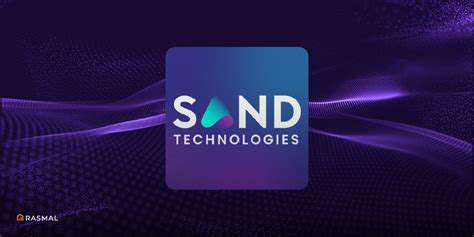How to Prepare for a Video Interview

Crafting Your Pre-Interview Preparation Plan
Understanding the Video Interview Landscape
Video interviews are rapidly becoming the norm, and it's crucial to understand how they differ from traditional in-person interviews. This shift necessitates a specific approach to preparation. Knowing the platform used (e.g., Zoom, Google Meet, or a custom platform) is important because each platform might have unique features or limitations that could affect your performance. Familiarity with the tools will ease your nerves and allow you to focus on answering questions effectively.
Beyond the platform, consider the visual component. A well-lit, uncluttered background significantly impacts the interviewer's perception of you. Poor lighting or distracting elements can detract from your professionalism and potentially affect your performance. Practicing your body language in front of a mirror or using a video recording tool to review your appearance and demeanor can help.
Mastering Your Technical Setup
A flawless technical setup is paramount to a successful video interview. Ensure your internet connection is stable and reliable. Test your audio and video quality in advance to avoid unexpected glitches during the interview. A strong connection and clear video are essential to project professionalism and confidence. Consider using headphones with a microphone for better audio clarity and minimizing background noise.
Choose a quiet and well-lit location for your interview. Notify those around you of the interview to minimize interruptions. Having a backup plan in case of technical difficulties, such as a secondary internet connection or a mobile hotspot, is also a wise precaution. These proactive steps will significantly reduce stress and allow you to focus on demonstrating your best self.
Crafting Your Interview Strategy
Your preparation should extend beyond technical aspects to include a solid interview strategy. Research the company and the role thoroughly, emphasizing what you have in common with their values and goals. Anticipate common interview questions and formulate thoughtful responses, incorporating specific examples from your experiences to illustrate your skills and qualifications. Understanding the company culture and the specific requirements of the role will empower you to tailor your answers accordingly.
Practice your answers out loud, preferably in front of a mirror or using a video recording device. This allows you to identify areas for improvement in your body language and communication style. Review your responses to ensure clarity, conciseness, and professionalism. Rehearsing will increase your confidence and make you feel more at ease during the actual interview.
Managing Your Interview Mindset
The mental aspect of a video interview is often overlooked but crucial. Maintain a positive mindset throughout the preparation process. Visualize a successful interview, focusing on your strengths and past accomplishments. This visualization technique can help reduce anxiety and boost confidence. Acknowledge the potential for technical glitches and plan for them, but avoid dwelling on them. Remember that the interviewer is also human and likely understands that unexpected issues can arise.
Take time to relax and prepare mentally before the interview. This could involve meditation, deep breathing exercises, or listening to calming music. Remind yourself of your value and qualifications. By approaching the interview with a positive and focused mindset, you'll be better equipped to showcase your best self and present yourself confidently.

Handling Technical Issues and Post-Interview Follow-Up

Troubleshooting Common Technical Glitches
Effective troubleshooting is crucial for maintaining a smooth user experience. Identifying and resolving technical issues promptly prevents frustration and ensures that users can seamlessly interact with the platform. Understanding the root cause of the problem is paramount to finding the correct solution. This involves careful analysis of error messages, user reports, and system logs. A systematic approach, guided by a predefined troubleshooting flowchart, further enhances efficiency.
Common technical glitches often stem from software compatibility issues, network connectivity problems, or hardware malfunctions. These issues can range from minor inconveniences to major disruptions, significantly impacting productivity and user satisfaction. Swift and accurate diagnosis is essential to minimize downtime and restore service as quickly as possible.
Post-Implementation Support and Maintenance
Post-implementation support and ongoing maintenance are vital for ensuring the long-term success of a project. Proactive monitoring of the system, coupled with regular updates and patches, helps mitigate potential issues and prevents cascading failures. Comprehensive documentation and well-structured support channels facilitate effective communication and problem resolution with minimal disruption.
This includes providing training materials to users on how to effectively utilize the system and promptly address any emerging issues. Regular performance evaluations and system audits aid in identifying areas for improvement and ensuring the system continues to meet evolving needs. Timely responses to user inquiries and proactive problem solving are critical for maintaining user satisfaction.
Documentation and Knowledge Base
A well-maintained knowledge base is an invaluable asset for both users and support staff. Clear and concise documentation provides readily accessible information, empowering users to resolve many issues independently. This reduces the load on support teams and enables faster response times. Comprehensive documentation includes detailed explanations of features, step-by-step instructions, and troubleshooting guides.
Comprehensive documentation should cover the entire system's functionality, from basic operations to advanced configurations. Well-organized knowledge bases, often incorporated into user interfaces, allow users to quickly find answers to common questions. This fosters self-sufficiency and reduces the need for extensive support interactions.
Communication and Feedback Mechanisms
Establishing effective communication channels for user feedback is essential for continuous improvement. This includes providing various methods for users to report issues, provide suggestions, and share their experiences. Prompt responses to user inquiries and feedback are crucial for maintaining a positive user experience. Actively soliciting user feedback helps identify areas for enhancement and allows for iterative improvements to the platform.
Open communication channels, such as online forums, email support, and dedicated feedback portals, enable users to voice concerns and suggestions. Constructive dialogue fosters a sense of community and encourages continuous development and refinement of the platform.
Security Measures and Data Protection
Implementing robust security measures is paramount for protecting user data and ensuring the integrity of the system. Regular security audits and vulnerability assessments help prevent unauthorized access and data breaches. Strong passwords, multi-factor authentication, and encryption protocols are crucial for safeguarding sensitive information.
Maintaining up-to-date security software and employing firewalls are essential for protecting against external threats. Compliance with data privacy regulations is crucial, and transparent policies regarding data handling must be clearly communicated to users. These measures collectively contribute to building a secure and trustworthy platform.
Escalation Procedures and Support Teams
Having well-defined escalation procedures is critical for handling complex or unresolved technical issues. This ensures that support requests are addressed appropriately and efficiently. Clear guidelines for escalating issues to senior support personnel are essential.
Support teams should be structured and organized to efficiently handle diverse technical challenges. Qualified personnel with expertise in the specific system should be readily available to resolve escalated issues. Well-defined communication protocols during the escalation process ensure that issues are resolved promptly and effectively.
Metrics and Performance Analysis
Tracking key performance indicators (KPIs) and analyzing system performance metrics is crucial for identifying trends and areas needing improvement. Monitoring system load, response times, and error rates provides valuable insights into the system's health. This data helps identify potential bottlenecks and allows for proactive adjustments to prevent performance degradation.
Regularly analyzing user experience data, such as error rates and satisfaction scores, is important for understanding user interactions and identifying areas for improvement. These insights can inform decisions about resource allocation, system enhancements, and support strategies, ultimately leading to a better user experience. Detailed reporting and analysis ensure continuous optimization of the platform.
![Guide to Learning [Specific Software, e.g., Excel]](/static/images/31/2025-04/CreatingandFormattingCharts3AVisualizingYourData.jpg)
![Guide to Learning [Specific Art Form]](/static/images/31/2025-05/FromSimpletoComplex3AStep-by-StepPaintingExercises.jpg)







![Best Smart Vacuum Cleaners [2025 Review]](/static/images/31/2025-05/SmartFeaturesandConnectivity3AStreamliningYourCleaningRoutine.jpg)

